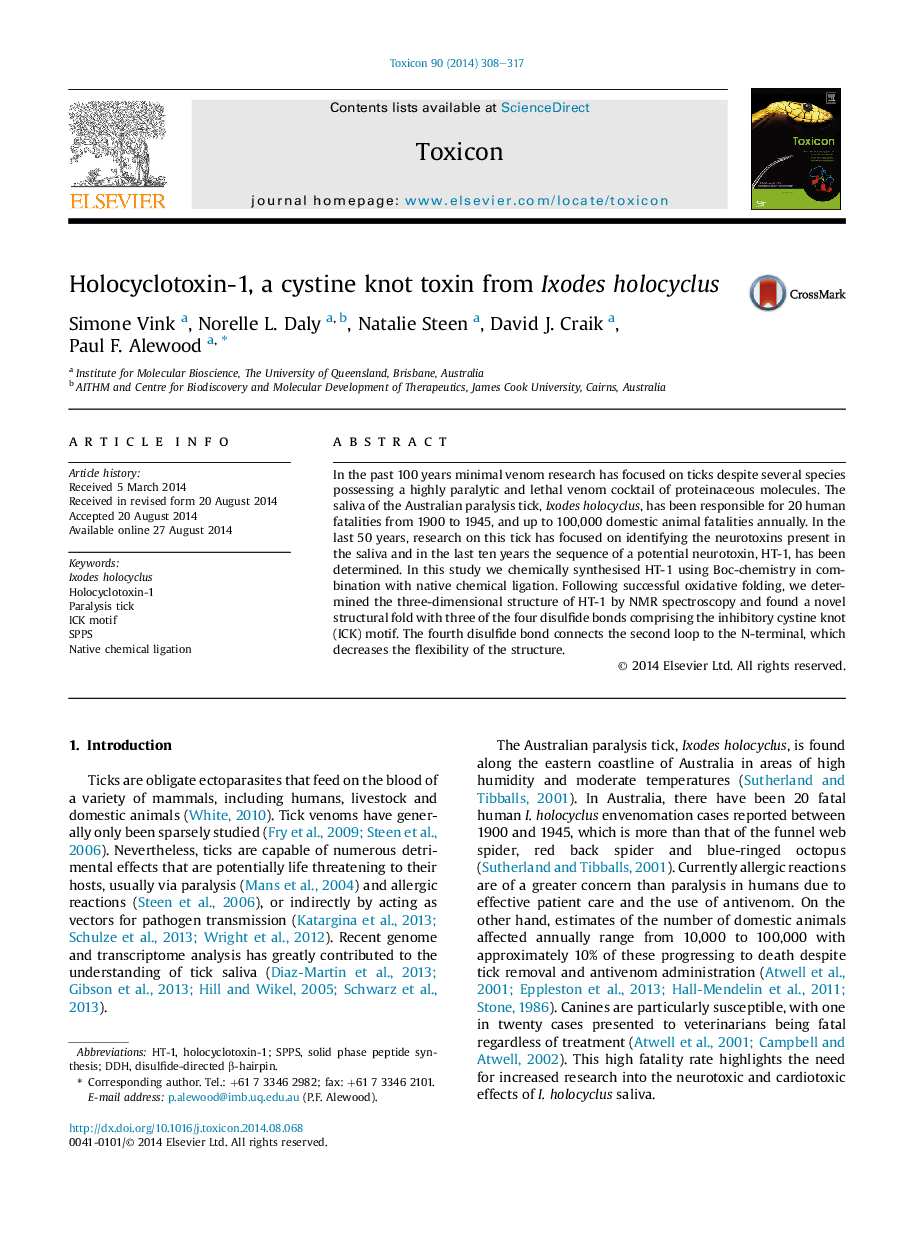| Article ID | Journal | Published Year | Pages | File Type |
|---|---|---|---|---|
| 8396242 | Toxicon | 2014 | 10 Pages |
Abstract
In the past 100 years minimal venom research has focused on ticks despite several species possessing a highly paralytic and lethal venom cocktail of proteinaceous molecules. The saliva of the Australian paralysis tick, Ixodes holocyclus, has been responsible for 20 human fatalities from 1900 to 1945, and up to 100,000 domestic animal fatalities annually. In the last 50 years, research on this tick has focused on identifying the neurotoxins present in the saliva and in the last ten years the sequence of a potential neurotoxin, HT-1, has been determined. In this study we chemically synthesised HT-1 using Boc-chemistry in combination with native chemical ligation. Following successful oxidative folding, we determined the three-dimensional structure of HT-1 by NMR spectroscopy and found a novel structural fold with three of the four disulfide bonds comprising the inhibitory cystine knot (ICK) motif. The fourth disulfide bond connects the second loop to the N-terminal, which decreases the flexibility of the structure.
Related Topics
Life Sciences
Biochemistry, Genetics and Molecular Biology
Biochemistry, Genetics and Molecular Biology (General)
Authors
Simone Vink, Norelle L. Daly, Natalie Steen, David J. Craik, Paul F. Alewood,
